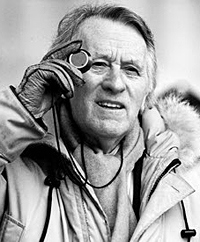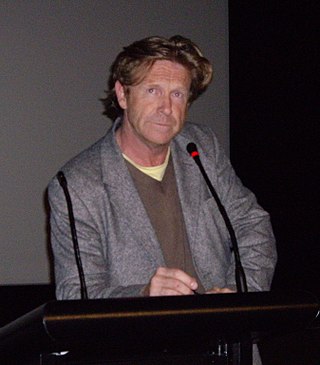
Gilbert Taylor, B.S.C. was a British cinematographer, best known for his work on films such as Dr. Strangelove, A Hard Day's Night, Repulsion (1965), The Omen (1976), and Star Wars (1977). In the course of his career, he collaborated with directors like Roman Polanski, Stanley Kubrick, Alfred Hitchcock, and Mike Hodges. He was nominated for two BAFTA Awards, and received a Lifetime Achievement Award from the British Society of Cinematographers.

Jack Cardiff was a British cinematographer, film and television director, and photographer. His career spanned the development of cinema, from silent film, through early experiments in Technicolor, to filmmaking more than half a century later.

Frederick William FrancisBSC was an English cinematographer and film director whose filmmaking career spanned over 60 years, from the late 1930s until the late 2000s. One of the most celebrated British cinematographers of his time, he received numerous accolades for his photography, including two Academy Awards and five BAFTA Awards. As a director he was best known for his horror films, notably those made for production companies Amicus and Hammer in the 1960s and 1970s.

Ralph Douglas Vladimir Slocombe OBE, BSC, ASC, GBCT was a British cinematographer, particularly known for his work at Ealing Studios in the 1940s and 1950s, as well as the first three Indiana Jones films. He won BAFTA Awards in 1964, 1975, and 1979, and was nominated for the Academy Award for Best Cinematography on three occasions.
Christopher George Joseph Challis BSC, FRPS was a British cinematographer who worked on more than 70 feature films from the 1940s onwards.
Geoffrey Gilyard Unsworth, OBE, BSC was a British cinematographer who worked on nearly ninety feature films during a career that wound up spanning over more than forty years. He is best known for his work on critically acclaimed releases such as Stanley Kubrick's 2001: A Space Odyssey, Bob Fosse's Cabaret and Richard Donner's Superman.

Peter Suschitzky, A.S.C. is a British cinematographer and photographer. Among his most known works as director of photography are The Rocky Horror Picture Show, The Empire Strikes Back, and Mars Attacks! and the later films of David Cronenberg. Suschitzky succeeded Mark Irwin as Cronenberg's regular cinematographer when Irwin left during the pre-production of Dead Ringers (1988), and has been the cinematographer for all of Cronenberg's films since, with the exception of Crimes of the Future (2022). He has also collaborated with directors John Boorman, Ken Russell, Bernard Rose, and Tim Burton.
Roger James Edward Pratt is a British cinematographer.
Billy Williams is a British cinematographer.
John Coquillon (1930–1987) was a Dutch cinematographer.
The British Society of Cinematographers is an organisation formed in 1949 by Bert Easey, the then head of the Denham and Pinewood studio camera departments, to represent British cinematographers in the British film industry.
Alexander Thomson BSC was a British cinematographer.
Gerry Fisher, B.S.C. was an English cinematographer.

Anthony Dod Mantle, DFF, BSC, ASC is a British cinematographer and still photographer.
Oswald Norman Morris, BSC was a British cinematographer. Known to his colleagues by the nicknames "Os" or "Ossie", Morris's career in cinematography spanned six decades.
Ivor Daniel Mindel, ASC, BSC, SASC is a South African-American cinematographer best known for his work on blockbuster action films like Enemy of the State, Mission: Impossible III, Star Trek, Star Trek Into Darkness, Star Wars: The Force Awakens, and Star Wars: The Rise of Skywalker, working with directors like Tony Scott and J. J. Abrams.
Glory Film Co. was established to produce the cinema film 'The Troop' which had a Royal Premiere at BAFTA in the presence of The Princess Royal. Shot in 35mm CinemaScope the film features The King's Troop, Royal Horse Artillery and has a narrative introduction by Oscar-winning actor John Mills.
Gerald Leslie "Gerry" Turpin was an English cinematographer.
Ernest Day, B.S.C. was a British cinematographer and director of film and television, known for his collaborations with David Lean and Lewis Gilbert. He spent the majority of his career as a camera operator, often referred to Lean as his "eyes", and was the first British cameraman to operate a 70mm film camera. He was nominated for an Academy Award and BAFTA Award for Lean's final film A Passage to India (1984).

Robin Vidgeon BSC, is a retired cinematographer best known for his work on Hellraiser, Hellbound: Hellraiser II and Nightbreed. For many years, he was a focus puller, working with the late cinematographer Douglas Slocombe and camera operator Bernard (Chic) Waterson.






